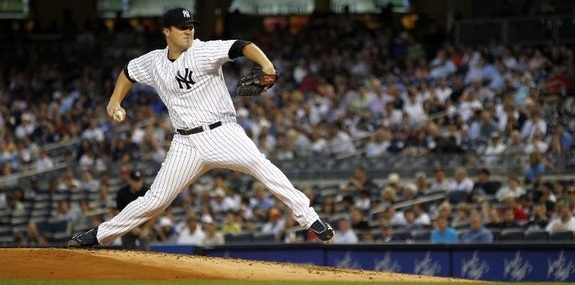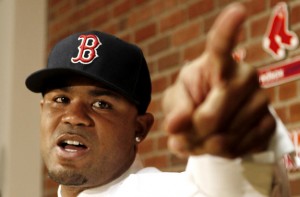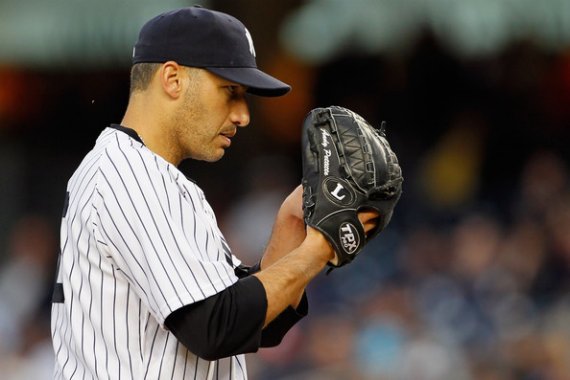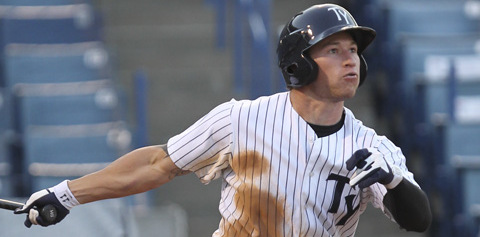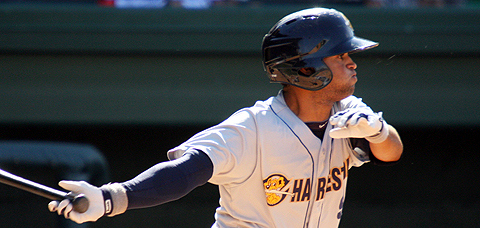
Not so long ago, I wrote an uncharacteristically pessimistic post that was admittedly a bit trollish in its conception: exploring the problems and challenges that could face a Yankee team that at the time enjoyed a comfortable six-game lead over its division rivals. While the Yankees had several hurdles to overcome, I concluded that the division lead along with the talent gap between the Yankees and their pursuers should allow the Yankees to cruise to a division title and playoff berth.
I still believe that to be the case, but the events of the last few weeks have increased the likelihood of an different outcome. The combination of poor play by the Yankees and strong performances from the Rays and Orioles have whittled the Yankees’ division lead down to one game. In Wild Card race, the Oakland A’s have gone on a tear, and currently hold the same record as the Bombers. Suddenly the possibility of the Yankees losing the division or even missing the playoffs doesn’t seem so remote. The specter of a monumental collapse a la Boston in 2011 looms over the collective psyche of nervous Yankee fans, who fear karmic payback for their schadenfreude of yesteryear.
Since the folks here are mostly rational, I thought it would make sense to analyze which contributors to the Yankees’ struggles seem likely to persist, and which ones may be resolved going forward. I’ll take a look at some reasons for why Yankee fans should be concerned, as well as some reasons why things are still looking promising. Feel free to add your own to the list if I leave anything out.
Reasons to panic
Death by bullpen: Outside of Rafael Soriano and David Robertson (who have had their occasional slip-ups), the rest of the Yankee bullpen has been unreliable of late. This has at times caused Joe Girardi to make multiple pitching changes in a single inning, delighting binder-joke aficionados worldwide. It has also made keeping leads in the middle innings a difficult task. Cody Eppley in particular seems less effective than he was earlier in the season, Joba Chamberlain has struggled mightily since returning from the DL, and Derek Lowe has been awful since the Yankees acquired him. Boone Logan has continued to hold down the fort, but his heavy usage could take a toll on him.
Injuries: Although Alex Rodriguez just returned, the Yankees are still suffering injuries to several important contributors. Andy Pettitte hasn’t pitched a rehab outing yet, Curtis Granderson has been hampered by hamstring tendinitis, Mark Teixeira is still out, and Robinson Cano may have tweaked something in his hip while going after a ground ball in the 9th inning yesterday. These injuries have forced the Yankees to rely heavily on their bench. While some bench players (Eric Chavez in particular) have been up to the task, others (I’m looking at you Andruw Jones) have struggled mightily. The Yankees have gotten by so far in 2012 with solid contributions from their bench, but their recent offensive woes (wRC+ of 74 the past 2 weeks) show the effect that losing several middle of the order contributors can have on overall offensive production.
Reasons to relax
Help is on the way: Alex Rodriguez’s return instantly lengthens the Yankee lineup, adding some desperately needed right-handed power to a team that has been punchless of late. Mark Teixeira, Andy Pettitte, and Ivan Nova are on the road to recovery, and could provide some much needed depth to an anemic lineup and struggling rotation respectively.
Slumpbusters: Of late, the Yankee lineup has struggled offensively. Only three members of the Yankee lineup have posted above league-average production over the last 2 weeks: Robinson Cano (146 wRC+), Derek Jeter (137 wRC+), and Nick Swisher (128 wRC+). While this trio has been carrying the offense, the rest of the offense has been putrid. This includes (skip this section if you have a weak stomach) Russell Martin (56 wRC+), Curtis Granderson (36 wRC+), Eric Chavez (40 wRC+), Ichiro (10 wRC+), Andruw Jones (-8 wRC+), and Raul Ibanez (-25 wRC+).
With only one third of the lineup performing anywhere above the league average or near their career norms, there is no wonder that the Yankee lineup has had trouble scoring runs of late. It seems improbable that this horrific stretch can continue, and eventually some of these guys can turn things around. While several of these guys have been horrible all season, there is enough talent there for a few of them to get things going again.
Look at the schedule: While the Yankees’ schedule for the beginning of September is tough (two more games against the Rays and four against the Orioles), things soften up for the Bombers after the big rivalry games. There is one more three-game series against the Rays, but otherwise, the Yankees’ opponents include the Twins, Red Sox, and Blue Jays. A few years ago this would have been a formidable slate, but at a collective 51 games under .500, the Yankees shouldn’t have too much to worry about. This is especially true if the Yankees get some of their starters back and contributing by then. Baltimore also has a light schedule (though a three-game series against the suddenly-good A’s could prove challenging), while the Rays have some tougher matchups remaining, including the White Sox and the Rangers. If the Yankees can survive the games against Baltimore and Tampa with their lead intact, they should be able to hold their ground against some weaker opponents down the stretch.
Overall, the Yankees do have some real concerns to address down the stretch. Getting some injured players back could help, but the fact of the matter is that this team has looked lifeless over the past few weeks. A combination of crappy hitting, sloppy fielding, and poorly-timed pitching meltdowns has resulted in some frustrating losses recently. Two thirds of the lineup needs to either get healthy or remember how to hit, and the Yankees will need to get some big performances from their starters to prevent the bullpen from getting overexposed. I still think this team has too much talent, especially when compared to Baltimore and Tampa, to lose this division. The favorable schedule also helps in that regard. But as they say, these games aren’t played on paper. A number of players will have to start living up to the numbers on the back of their baseball card if the Yankees are going to make a run into October.
